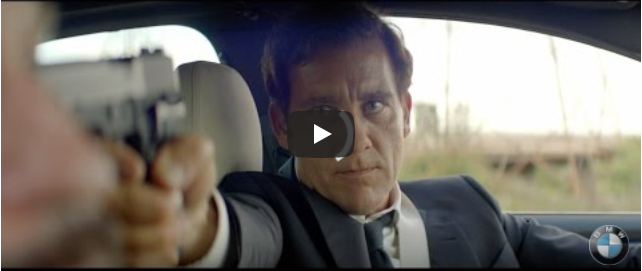
The BMW Market Segmentation story is one of the finest that marketers look up to. And that’s because BMW has been able to target multiple segments at one time.
But more important in the BMW market segmentation success story is their impeccable understanding of segmentation.
Sounds really intuitive, doesn’t it?
Sure it does.
But here’s what BMW understands about segmentation that most other companies probably don’t. And that is the simple fact that a segment is not a group of people.
Instead, it is a criterion that fits a group of people.
Which means that if today a certain group of people fits that criteria, then tomorrow some other people will fit those criteria.
Want to know how the BMW market segmentation use this idea for targeting and positioning to create a success story?
Also Read: The Positioning Formula: What is Positioning? (The Viagra example)
Then read on because in this article I will be sharing with you the BMW Segmentation and Targeting success story from 2001 which led to a brilliant ad campaign.
[cmtoc_table_of_contents]
In this article, I will tell you about the BMW target segments and also about how does BMW segment its consumers and why does this work for BMW that way?
What is Segmentation, Targeting, and Positioning?

It is really crucial for you to understand what is segmentation, targeting and positioning before we get into the BMW market segmentation.
How would you begin the marketing process for a company you are working for or for a project that you are working on?
Would you begin by identifying the needs of the customer?
If yes, then which needs of which of your customers?
As a marketer, you might not be working towards just one need of a customer, but different needs of different customers.
And when you group the customers based on some homogeneity in their needs or based on some criteria involving their attributes and characteristics, you have perfectly performed segmentation on your audience.
Also Read: What Hotstar and other brands can teach us about Positioning and Differentiation?
Now you would know the different clusters of need that you have to cater to.
So to get this correct, segmentation is where you would begin to create value for your customers that the customers need. Because now you would know which kind of customers need what.
Gone are the days of mass marketing. If the need of my customer A is different from the need of the customer B, you would want to tell about the same product to both the customers differently.
Further, a particular product of yours can only be for one or few segments. And therefore, you need to choose which segments(s) you plan to target. This is Targeting.
You would want them to associate with the product differently, in line with what utility they see from it. Therefore, you are eventually positioning your product differently to capture each segment’s imagination differently.
In fact, you might as well offer them a different customized version of the product, if possible.
BMW Marketing Strategy of the Short Films

The German automobile company, BMW, exemplified an astute sense of Segmentation, Targeting, and Positioning.
In 2001, BMW found itself with a market share that had hit a plateau in a market that was cluttered with many international players.
In order to stand apart from the crowd and to reinvent its brand identity, BMW initiated an extremely successful marketing campaign.
This BMW marketing strategy revolved around a series of short films that it released.
BMW released a series of short films, titled The Hire. This entire series had numerous short films directed by various avant-garde directors of that time such as Tony Scott, Ang Lee, John Woo, James Brown and many more.
Across all the short films, the lead actor Clive Owen features as the ‘Driver’ who works on contract to transport valuable things from one place to another. His most trusted choice for the road always turns out be a BMW car.
The short films are extremely high on action, with Clive Owen cutting through the traffic on the streets in his swift and swanky BMW cars.
He is chased by the antagonists, the cars of whom never seem to be able to match the performance of the BMW. And, therefore, in all of these episodes, Clive Owen is not the only one who emerges as the hero.


But do you think that this BMW marketing strategy was just about telling people how cool their car was?
Do you think that this BMW marketing strategy was for its existing customers to feel good about their purchase? Or for the potential customers who can afford a car like that?
If you look at these films, they exuberate a certain kind of attitude. Some of them are edgy, some are extremely violent and gruesome. Some are classy and swanky while some have blood and gore.
Download: How to Analyse Marketing Case Studies [E-book]
And that again brings us back to the pertinent question to ask is that what was the purpose of these short films? For whom were they created and what was the impact on the segment for which they were created?
For this let us understand what is the basic BMW market segmentation.
BMW Market Segmentation

BMW is famous for its series, the BMW 3 series, the BMW 5 series, and the BMW 7 series.
It is certain that the customers for each of these series would be fairly different. What would you assume each of the three types of customers to be like?
Prof. Darren Dahl of UBC Saunder School of Business suggests the following could be a kind of segmentation.
For the BMW 3 series, one would imagine, the customer would be a 30-35-year-old, young professional working at, say, a private equity firm. He/she still hasn’t made it big but is ambitious.
Similarly, for the other extreme, the BMW 7 series, one would assume the customer to be a CEO or an old, senior management person, most likely a man. He is 55 – 65 probably retired or is in his final years of professional life, he has made it big and the car signifies his achievements.

I drew this image to tell you what is the BMW Market Segmentation like for its three series of cars. This should give you a sense of understanding that and will now help you understand the BMW Marketing strategy even better.
So who was BMW targeting?

One might be even more inquisitive about which segment was this particular edgy and brashy campaign targeting at.
Without much thinking, it will be clear that they weren’t targeting the BMW 7 series segment. Those movies are too violent for their liking and do not fall into the taste of movies which that generation would like to watch.
The target segment definitely isn’t the 40-55-year-old BMW 5 series owners as well. They have a family and the content is too graphic to be seen with kids and family.
There could be a certain level of argument about the target being the BMW 3 series owners. But a few of you would begin to realize that the target wasn’t even them.
So then who was BMW targeting?
You would be surprised to know the segment that BMW was really targeting with these short films.
The target segment of this campaign was young college students of 17 – 23 year old!
In fact, the BMW market segmentation and targeting were so meticulously thought out that this campaign was delivered in a way that it could only reach that younger segment.
Campaign Delivery to match the Targeting
This campaign was released way back in 2001-02 when there were few internet connections in the US, which was the actual playground of this campaign.
The download speeds were slow that would take at least 2-3 hours to get these videos from the internet. The registration processes were also made complex to finally reach this video.
Out of everybody, these young people would be the only ones who would be savvy enough to access it.
The BMW 7 series people will not have 2-3 hours to download it, they might not even know how to. So would be the case with the BMW 5 series segment and the BMW 3 series segment.
Also Read: Sex in Advertising and why it is time to Shake It Up!
Despite all of these self-imposed constraints, the first season got over 11 million views right in 2001 which led to the second season in 2002. These numbers speak of the success that this campaign was in creating recognition of the brand among the younger audience.
But why did BMW target this segment?
The idea to be appreciated here is how the company captured the imagination of the young people and positioned BMW as a brand that connects with them.
They get to see the BMW in the way they love seeing cars the most.
So while no other car manufacturer was targeting this age group, BMW comes about and sorts of creates a palpitation in their minds. At the same time, it serves as a nice example of how each segment requires a completely different marketing communication for targeting.
The reason for this BMW Marketing Strategy was to position BMW as an aspirational brand for the young people.
When the youngsters grow up and earn their moolah, they will aspire for BMW, the car which they fancied about since years
So somewhere with the crisp segmentation and targeting and with this beautiful campaign that went on for 3 seasons and quite a few years, BMW assured sustained popularity and the patronage in the years to come.
Conclusion
This BMW Marketing Strategy of producing short films way back in 2001 gave us a big lesson on market segmentation and targeting. In the article, I shared with you the BMW market segmentation and about who was the target segment of the campaign that they had.
If you are a marketer, you must understand what did BMW did here when they created this entire video series for a target segment that was not even their real potential customers at that point in time.






